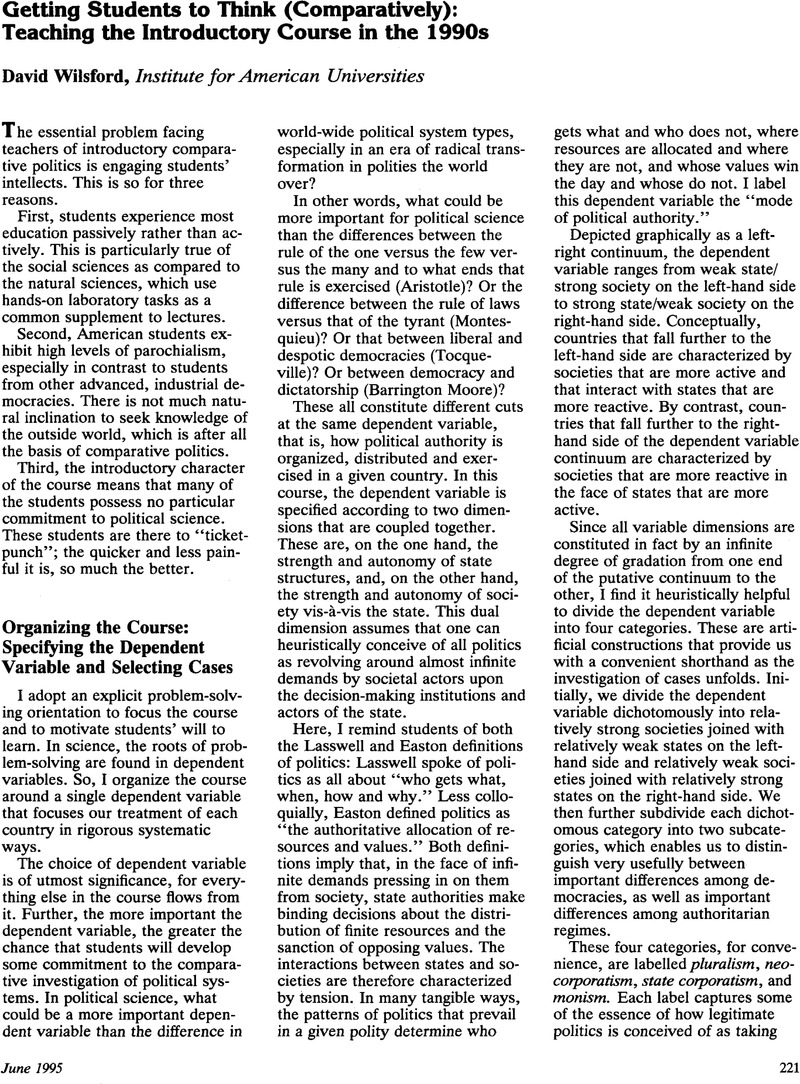Article contents
Getting Students to Think (Comparatively): Teaching the Introductory Course in the 1990s
Published online by Cambridge University Press: 02 September 2013
Abstract

- Type
- News
- Information
- Copyright
- Copyright © The American Political Science Association 1995
References
Notes
* David D. Laitin, now of the University of Chicago, had a substantial impact on the early formulation of my teaching philosophy and on some of the important, specific features of the pedagogy for introductory comparative politics that I outline here, in particular the focus on variables and the scientific method as a plausible and compelling way of teaching undergraduates comparative political science. His influence has shaped many of the specifics and the general concepts presented here. I also thank Sheilah Mann, Joseph Klesner, and two anonymous referees for serious and thoughtful critiques of an earlier version of this essay. Nonetheless, weaknesses and contradictions in this approach are, of course, my own.
1. The importance of case selection to the integrity of the scientific process that then unfolds has been forever impressed upon me by Arend Lijphart, who has been mentor, friend, and exacting taskmaster since graduate school. Indeed, I owe to him my emphasis on the indispensability of the comparative method to the whole political science enterprise. (Some students, however, wish I had never studied with Lijphart—or Laitin, too, for that matter!)
- 2
- Cited by


